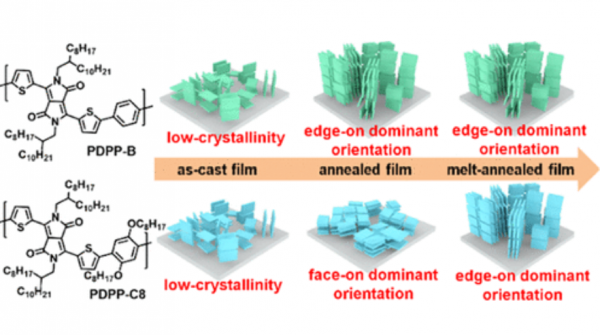Control of Crystallite Orientation in Diketopyrrolopyrrole-Based Semiconducting Polymers via Tuning of Intermolecular Interactions
- 저자
- Sung Y Son, Gang-Young Lee, Sangwon Kim, Won-Tae Park, Sang Ah Park, Yong-Young Noh*, Taiho Park *
- 저널명
- ACS Applied Materials & Interfaces, 11, 11, 10751–10757 (2019)
- 년도
- 2019
- Link
- https://doi.org/10.1021/acsami.8b20297 156회 연결
[Abstract]
Numerous previous studies have focused on the notion that semiconducting polymers with an edge-on dominant orientation are advantageous for horizontal charge transport, whereas polymers with a face-on dominant orientation are advantageous for vertical charge transport, since the crystallite orientation determines the π–π stacking direction, which in turn affects the interchain charge transport direction. Here, we report that the crystallite orientation is dependent on the intermolecular interactions in the semiconducting polymer. In this study, we control the intermolecular interactions in a donor–acceptor (D–A) semiconducting polymer via side chain engineering. To perform side chain engineering, we use two different polymers: one with side chains on only A units (PDPP-B) and the other with side chains on both D and A units (PDPP-C8). We observe that PDPP-C8 is characterized by weaker intermolecular interactions due to the additional side chains on D units. A morphological analysis reveals that PDPP-B and PDPP-C8 films have microstructures that are characterized by edge-on and face-on dominant orientations, respectively. Therefore, we demonstrate that our strategies effectively control intermolecular interactions and, consequently, the crystallite orientation. Finally, we compare the vertical and horizontal mobilities of both polymer films. These results show that the crystallite orientation has significant influence on charge transport behaviors.
